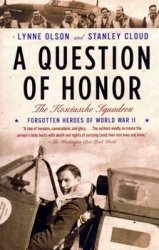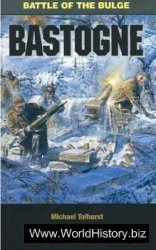The emergence of Chavfn de Huantar as a dominant regional center during the late Initial Period and Early Horizon was paralleled by similar developments elsewhere in the northern highlands and the upper reaches of adjacent coastal drainages. Among the most important of these other regional centers was Pacopampa in Chota, Layzon in Cajamarca, Kuntur Wasi in the mid-Jequetepeque Valley and Palfka in the mid-Casma Valley. These centers
All featured massive public constructions with elaborate stone-lined drainage systems, rectangular and circular plazas, high stone-faced terraces, and finely constructed summit buildings. At least three, and probably all, of these also were adorned with carvings representing felines and other supernaturals. While none of the centers appears to be quite as impressive as Chavin de Huantar, each dominates the site hierarchy of its respective hinterland. In addition, there is evidence that each center may have had its own group of elite leaders, who were buried within the ceremonial architecture with luxury goods such as Spondylus necklaces, bead skirts or pectorals, gold jewelry, and cinnabar face paint (see Onuki and Kato 1993). The extensive fieldwork carried out at both Kuntur Wasi and Pacopampa has confirmed that the centers are contemporary with Chavin de Huantar, both with their origins in the late Initial Period and their apogee in the Early Horizon (Morales 1980, 1998; Rosas and Shady 1970, 1974).
Over half a century ago, Kuntur Wasi and similar centers were described as Chavin “colonies” by Tello’s protege Rebeca Carrion Cachot (1948), but subsequent archaeological studies have left little doubt about their distinctive cultural characteristics and independence. There is no evidence for a Chavin empire or expansive state but there is ample evidence of interaction between Chavin de Huantar and these other centers, both in terms of the exchange of commodities and emulation of style. In trying to model this relationship it is tempting to apply the notion of “peer polity” introduced by Colin Renfrew (1982). One can hypothesize that these centers, each the center of a small polity, competed with each other for prestige while at the same time exchanging valuables through gift giving and other mechanisms. The creation of alliances through intermarriage also must be considered. It is likely that such social networks underlay the movement of rare commodities such as obsidian or Spondylus. Finally, the reinforcement of these relationships through the addition of Chavin de Huantar’s religious cult also may have played a role in cementing these essentially symmetric relationships, as reflected in the abundance of exotic pottery at Chavin de Huantar and other coeval centers (Druc 1998).
Chavin de Huantar also appears to have entered into relationships with groups that were not its peers, at least in terms of sociocultural complexity. As evidenced by the emulation of Chavin’s Early Horizon pottery style, the spread of Chavin’s sphere of interaction advanced into the high puna grasslands of the central highlands of Junin and Pasco, where herds of llamas, alpacas and wild vicuna abounded. It also left a strong imprint in the Hual-laga drainage that links the arid Andean slopes with the more tropical ceja de selva lands where coca is now produced in abundance as a cash crop. In the Huanuco area, the increasing integration into the Chavin sphere led to the reorganization of the public centers and local settlement pattern (Izumi 1971).
Further to the south Chavin de Huantar appears to have established special relationships with the people of the Huancavelica area, perhaps to get access to the enormous cinnabar deposits native to this zone (Burger and Matos 2002). Similarly, links were established still further south in the Vilcashuaman area of Ayachuco, just north of the main source of obsidian for Chavin de Huantar and other coeval sites in central and northern Peru (Burger and Glascock 2000; Ochatoma 1985; Yuichi Matsumoto, personal communication). In both cases, monumental complexes were built in areas without a prior tradition of public architecture, and elements of Chavin stone-working and layout were emulated in their construction, as documented at Atalla and Campanayoq. These sites in Huancavelica and Ayacucho are characterized by locally produced pottery styles that incorporate forms and designs typical of the ceramics of the Janabarriu Phase at Chavin de Huantar. In most of the cases where the relations would have been asymmetric both parties probably viewed
These connections as advantageous. These new ties broke down traditional barriers and led to the sharing of ideas and technologies, as well as enhancing the flow of goods. There is no evidence that this “Chavin horizon” was spread by force and, in fact, warfare appears to have been a very minor part of life.
Many areas, such as the Huamachuco-Quirovilca-Cajamarca portion of the northern highlands, or the lower sections of the Casma-Nepena-Santa valleys of the central coast, appear to have consciously avoided being drawn into the sphere of interaction associated with Chavfn and they produced distinctive and contrasting cultural patterns that set them apart (Chicoine 2006). It is interesting, within this context, that the clearest evidence of organized warfare during the Early Horizon (Daggett 1987; Pozorski and Pozorski 1987;
Proulx 1985) occurs in the coastal area that resisted incorporation into the Chavin sphere of interaction. These military activities resulted in the construction of large-scale defensive architecture such as Chankillo (Ghezzi 2006).
Other areas of the north, central and south coast of Peru apparently chose to become integrated within the Chavfn sphere of interaction during the Early Horizon and some of these groups even embraced the Chavfn cult. The earliest evidence of the expansion of the Chavfn cult may come from the sites of Cerro Blanco and Huaca Partida in Nepena, and may date to the end of the Initial Period, but most evidence of the cult’s impact is many centuries later.
Few Early Horizon sites on the coast have been extensively excavated but limited investigations attest to ceramic components with strong similarities to the Janabarriu style at Caballo Muerto and Morro de Eten on the north coast, Ancon on the central coast and Cerillos and Karwa on the south coast (Alva 1986; Burger 1984, 1988, 1993; Elera 1983; Wallace 1962;
Watanabe 1976). Perhaps the best evidence for the presence of the Chavfn cult comes from representations in the classic Chavfn style of the highland temple’s supernatural beings on portable objects. Whether shown on elaborately engraved monochrome bottles or painted on polychrome cotton textiles, these locally produced images show an intimate knowledge of Chavfn religious art that can only be explained by direct contact with the ceremonial center at Chavfn de Huantar (Figure 35.10). Their reproduction in these distant lands seems

Figure 35.10. Painted cotton textiles from Karwa on Peru’s south coast depict Chavin supernaturals in the classic style of the Chavin de Huantar sculptures. (Richard Burger)
To be more than simple emulation; it bespeaks of religious belief, a possibility consistent with a model of long-distance pilgrimage to the extraordinary center in the Mosna Valley. This pilgrimage model may be broadened to include the possibility of formal branches of the cult in some of these areas, in which case one can conceptualize Chavin as a “regional cult” that cross-cut ethnic and linguistic boundaries reinforcing the economic and social network that already linked many of these groups (Burger 1988, 1993; Werbner 1977).
The emergence of the Chavin sphere of interaction during the Early Horizon, with its complex and multiple facets, has yet to be investigated in depth. Nonetheless, it is clear that this phenomenon was intimately linked with the history of the Chavin de Huantar site and that it produced a degree of cultural integration in the Central Andes that was unprecedented. In that sense, “Chavin” in the broadest sense constitutes a cultura matriz of the kind imagined by Julio C. Tello almost a century ago.




 World History
World History

![United States Army in WWII - Europe - The Ardennes Battle of the Bulge [Illustrated Edition]](/uploads/posts/2015-05/1432563079_1428528748_0034497d_medium.jpeg)







